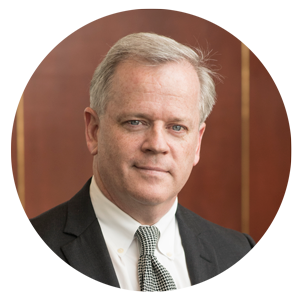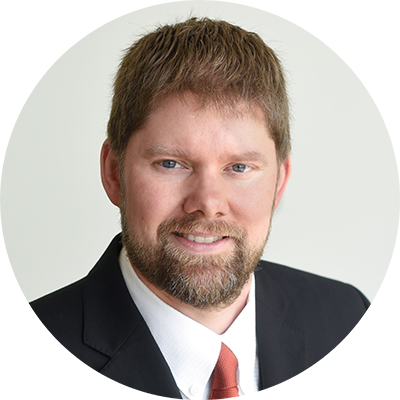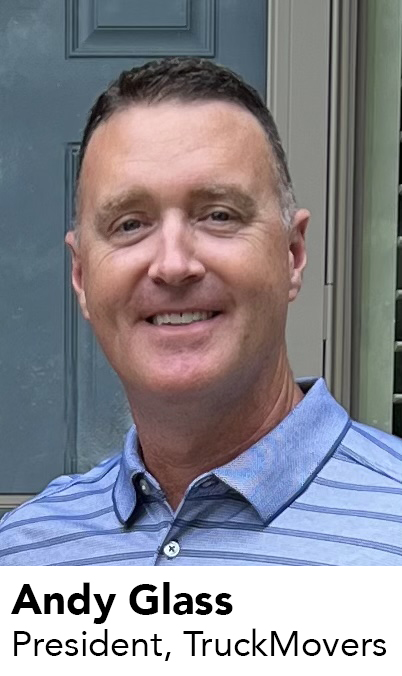The Bottom Line – Banking on Stability

Banking on Stability
The cost of money has gone up. Here's how to benefit from it.
Recent developments in the broader financial markets continue to make headlines, and we wanted to take an opportunity to provide some perspective on the current economic environment, and suggest at least one way to possibly benefit from it.
As you’re no doubt aware, the Federal Reserve has been taking steps to counteract inflation for some time now by raising interest rates but there’s rarely consensus as to how far rates should rise to achieve the goal.
While this is generally considered an effective approach, it is not without risk, and there is always the possibility of overcorrection and unintended consequences.
Unfortunately, we saw some of those consequences earlier this year when Silicon Valley Bank and Signature Bank – two isolated examples – became hobbled by unusual and unexpected market forces, likely brought on by the Fed’s sudden course of rate hikes.
Beyond basic (and temporary) asset depreciation, both banks also suffered from concentrated deposit flight.
The Fed responded by creating a liquidity enhancement tool known as the Bank Term Funding Program, which has been well received and broadly subscribed. The program provides additional stability and strength to the entire U.S. banking system which is good news for consumers, businesses – and banks large and small.
Looking ahead, there is some debate about where the Fed will go from here. While some insiders suggest that rate hikes are still being considered, the larger marketplace is signaling that rate cuts may be the bigger story in 2023.
Bottom Line: In light of this uncertainty, I would respectfully suggest that now might be a good time to consider a portfolio of laddered Certificates of Deposit. Rates and returns have become attractive again and this approach can provide a predictable source of income while minimizing risk.
Banks are still the pillars of our local, regional and national economies. They overwhelmingly foster stability and security. As a community bank we’re dedicated to building our hometown and committed to the local communities we serve.
Interested in finding out how this could work for you and your business? Email the professionals in our Treasury Department for more details.
Thank you for your continued trust and partnership.

— Chris Thompson, Executive Vice President, Capital Markets & Investments, Country Club Bank - Member FDIC
Economic Insights
Job market headwinds continue to strengthen
The job market continues to be a topic of discussion for many, with recent data indicating a decline in job openings from a peak of 12 million in March 2022 to now below 10 million (9.9 million) for the first time since May 2021. This means that the demand for labor is beginning to soften.
On the flip side, the supply of labor has been increasing in the short term. After bottoming at 60.1% in April 2020, the labor force participation rate (i.e. the percentage of the US population looking for or working a job) reached 62.6% in March 2023.
Economics 101 would say that when demand is decreasing and supply is increasing, the unemployment rate likely needs to move higher in the short term (which, again, is what the FED is guiding to).
In the longer term, the U.S. labor market appears challenged by an aging population that is increasingly entering retirement. This has driven the labor force participation rate from a peak of 67.3% in early 2000 to the aforementioned 62.6% of today.
One of the key drivers of the aging population is the baby boomer generation, which constitutes a significant portion of the current labor force. This generation, born between 1946 and 1964, will continue to play an outsize role in the labor market for at least the next decade or so, as the youngest baby boomers are just 59 years old today. As more baby boomers retire, the labor force will continue to shrink, which could further exacerbate the labor supply issue.
The declining birth rates we experienced during the Great Recession (2008) will also impact the labor market. There will likely be a shortage of skilled labor coming out of colleges, starting in 2030, when those born in 2008 will graduate. This will also be happening at the same time as peak Baby Boomer retirement, possibly further intensifying the shortage in labor.
Bottom Line: In the near term, labor demand is slowing at the same time labor supply is increasing. This will likely continue to move the unemployment rate higher. In the long run, the supply of labor in the U.S. continues to be challenged due to more retirements and lower birth rates.
And when employers struggle to find qualified workers, the risks of slower job growth and wage stagnation go up. There are levers that can still be pulled, however, to lessen the impact of labor shortages such as new investments in automation, artificial intelligence, re-skilling or up-skilling programs, and employer financing incentives for expansion, training, and new business development.

— Marcus Scott, CFA, CFP®, Chief Investment Officer (CIO) for The Country Club Trust Company
CFA® and Chartered Financial Analyst® are registered trademarks owned by CFA Institute.
Certified Financial Planner Board of Standards Inc. (CFP Board) owns the certification marks CFP®, CERTIFIED FINANCIAL PLANNER™, CFP® (with plaque design), and CFP® (with flame design) in the U.S., which it authorizes use of by individuals who successfully complete CFP Board's initial and ongoing certification requirements.
The opinions and views expressed herein are those of the author and do not necessarily reflect those of Country Club Trust Company, a division of Country Club Bank, or any affiliate thereof. Information provided is for illustrative and discussion purposes only; should not be considered a recommendation; and is subject to change. Some information provided above may be obtained from outside sources believed to be reliable, but no representation is made as to its accuracy or completeness. Please note that investments involve risk, and that past performance does not guarantee future results.
Client Success
TruckMovers invests in good people and systems — with capital from Country Club Bank
Since 1983, Independence, Mo.-based TruckMovers has been on a mission to become the truck driveaway industry gold standard for the transportation of new and used trucks for dealers and manufacturers across North America, including Canada and Mexico. With an emphasis on systems and technology, the company has gone from moving 30,000 trucks annually 15 years ago to moving over 175,000 in 2022. TruckMovers President Andy Glass shares the company’s growth story and history working with Country Club Bank, and also provides perspective on some of the transportation industry’s key trends.
From one truck to thousands, whether it be used equipment or finished vehicles from the factory, nobody moves more trucks or moves them better than TruckMovers.
 That’s the company’s bold promise – and the attested experiences of the nation’s leading truck manufacturers and dealers – who have trusted TruckMovers to move their vehicles for over 40 years.
That’s the company’s bold promise – and the attested experiences of the nation’s leading truck manufacturers and dealers – who have trusted TruckMovers to move their vehicles for over 40 years.
President Andy Glass says a commitment to systems and technology early on gave TruckMovers a competitive advantage that it has continued to press to win big clients and big contracts.
‘We look at everything we do in our business from a systems and technology lens,” Glass said. “Our CEO, Tom (Duvall), realized that investing in technology was the best way to facilitate growth and productivity and it’s been a big differentiator for us over the years.”
With a background in software engineering, Glass was one of TruckMovers’ first strategic hires on the technology side. Glass and his development teams have been instrumental in designing TruckMovers’ game changing technology such as an online marketplace exchange, a shipment tracking platform, driver contracting and management tools, a mobile app, and much more.
The company has grown to 800 full-time employees and over 2,000 contract drivers serving some of the biggest names in truck manufacturing including Daimler/Freightliner, Navistar/International, Mack, Volvo, and Kenworth.
Working with large companies and large orders creates large receivables that take time to be processed and paid. For working capital to make payroll, pay fuel bills, purchase new equipment and fund other general and administrative expenses, TruckMovers relies on revolving credit lines and term loans from Country Club Bank.
“Our Country Club contacts like Brian Hoban and his team are true relationship bankers,” Glass said. “They've gotten to know us and our business and the way it works so when we request credit or new loans they know why we’re asking, how it will be used and how we’re going to pay it back. They make things easy because they’re knowledgeable about our business and so well-prepared.”
In addition to working capital, Country Club Bank has also financed new real estate transactions as TruckMovers has expanded its storage capabilities and hub-and-spoke delivery network. And even though operations now cover the U.S., Canada, and Mexico, Glass said the company is proud to be based in Kansas City and makes its partnership decisions accordingly.
 “Doing business in Kansas City and working with great local partners like Country Club Bank is very important to us,” Glass said. “They have the personalized touch, plus all the expertise, size and sophistication we need for our deal sizes and advisory needs.”
“Doing business in Kansas City and working with great local partners like Country Club Bank is very important to us,” Glass said. “They have the personalized touch, plus all the expertise, size and sophistication we need for our deal sizes and advisory needs.”
Trends in transportation: what to watch and where they’re going
Glass and his colleagues at TruckMovers are keen observers of transportation trends and market forces at work. Here are three they’re watching and planning for this year and beyond:
-
Driver shortages, pay and preferences. TruckMovers has designed its business around the needs and preferences of its drivers. Next day pay, high-volume loads, and an easy-to-use mobile app make it fast, easy and profitable for drivers to work with the TruckMovers team – and stay with the team. Driver pay, scheduling and quality of life considerations allow TruckMovers to attract and retain the best.
-
Supply chain health and stability. Glass said that supply chains for truck manufacturers, while not back to full strength, are much better than the past two years, with fewer delays due to on-shore supplier sourcing and shipping. Manufacturers have built stronger and closer supply chain partnerships to ensure parts availability and vehicle delivery capacity.
-
Electric vehicle handling and delivery. As the proliferation of electric trucks continues, TruckMovers is paying careful attention to how best to serve that market, adapt its handling equipment, and deal with nascent charging networks.
With tremendous growth over the past decade, its large network of contract drivers and industry-leading technology, TruckMovers is well-positioned to maintain its growth rate and track record of success. And capital from Country Club Bank will continue to be a key ingredient for success.
“Country Club Bank keeps us supplied with the essential fuel for any business – and that’s cash flow,” Glass said. “They care more, they know more, and that makes us feel like we get more by working with them.”
Learn more about TruckMovers.com
Treasury Solutions
Reduce the risk of ACH and check fraud with Positive Pay
As the world becomes more digitized, businesses increasingly rely on electronic payment methods like ACH (Automated Clearing House) transactions. While ACH payments are efficient, cost-effective and secure, they are not immune to fraud.
Unauthorized ACH debits can have devastating consequences for businesses. This is where ACH fraud detection solutions come in.
ACH Positive Pay from Country Club Bank can help businesses identify approved debits for their accounts, sort out exception items and better protect their funds. Here’s how it works:
- ACH transactions from pre-approved parties are identified by the business.
- The approved transactions are added to the business's online banking profile.
- ACH debits that are presented to the account are matched in the system.
- Exception items are sorted out.
- The company can then decide whether to pay or return the itemized exceptions.
Contact a treasury representative or your banker to participate in ACH Positive Pay. With this fraud detection solution, businesses can enjoy greater peace of mind as fraudulent payments are easily identified and stopped before they can cause any harm.
Looking for the same protection for checks, too? Ask about Check Positive Pay to cover your outbound checks as well. Click here to learn more or email the Treasury Department for more details.
Newsletter Sign-Up